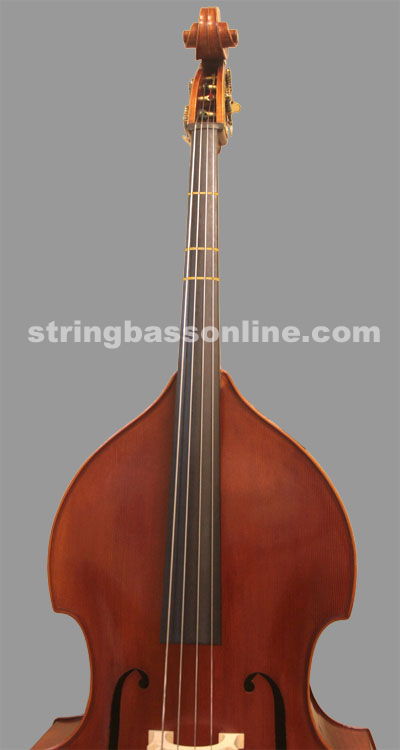Bass Fingering Tape

Bass Fingering Tape Tips
- To assist beginning bassists with correct finger placement, some bass teachers use thin strips of colored tape (e.g. book binding or scrapbook tape), to mark where students should place their fingers on the bass fingerboard. Once beginners know where to place their fingers, the tape should be removed.
- The tape is typically used to mark a regular 1st finger (such as the note E on the D string), 4th finger (e.g. the note F# on the D string, one whole step up from the first finger E), and the first finger in third position (e.g. the note G on the D string, one half step up from the fourth finger F# in first position).
- Rather than use precise measurements to place fingering tape, it's best to place the tape by ear. That means, after placing each piece of tape on the fingerboard, press your finger down on the string where the tape is located and use your bow to play that note. Listen carefully to determine whether or not the note sounds in tune and adjust the tape if needed. Variations in the width and shape of each person's finger affect where each tape should be placed so it's always best to listen and adjust the fingering tape to make sure they're properly placed.
- It's also important to remember that although fingering tape can provide beginners with an approximate location of where they should place their fingers, playing in tune requires the bassist to listen carefully to make sure they are playing the correct pitch. Fingering tape should be used as a temporary aid, not as a long term solution.
- Once beginners know where to place their fingers, the tape is removed. If any sticky residue is left, an instrument cleaner may be used to clean the fingerboard. If the residue is difficult to remove, isopropyl alcohol can be used to clean the fingerboard (do not let the alcohol touch the instrument varnish or it can cause significant damage).
© Copyright 2025 RK Deverich. All rights reserved.